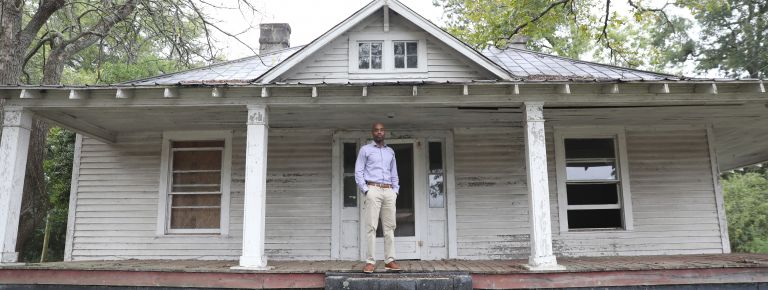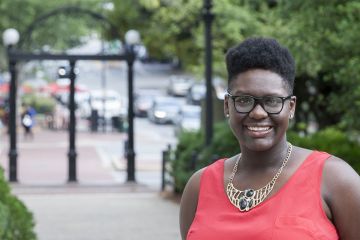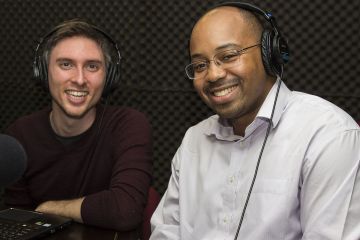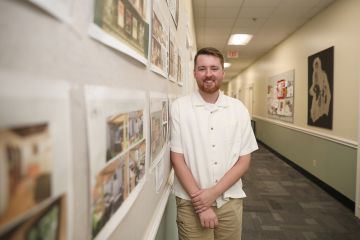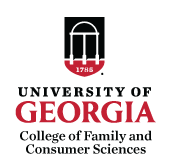Neighborhood in need of revival clings to hope
Hartwell, Ga. – A rusty chain is threaded through the busted glass of the double doors leading to the neighborhood gym.
There’s a spider web in the corner and the windows have been shattered with rocks. A peek inside the dark entrance reveals further signs of neglect: missing ceiling tiles, desks stacked in a corner, lumber and trash strewn about the rotting gym floor.
The gym was once the centerpiece of the historically black neighborhood, Rome, located just off the town square in Hartwell. During segregation, the gym hosted graduations, ballgames and proms. Some folks said James Brown even played there once.
“It hurts,” to see it now, said 76-year-old Larry Fouch, a longtime resident of the neighborhood who attended the all-black Hartwell Training School attached to the gym.
The dilapidated and vacant gym stands as the most glaring symbol of the sad fate of the once-thriving neighborhood in this town of about 4,500 residents.
“It’s just there for vandals now,” Fouch said.
University of Georgia faculty member Jermaine Durham grew up in the Rome neighborhood, graduating from Hart County High School in 2001. He moved away for college, then moved back in 2015. What he saw shocked him.
Well over one-third of the homes were dilapidated, yards were overgrown and local hangouts where kids once congregated vacant and boarded up.
“The first thing that came to mind was it looked like a war zone,” he said. “The neighborhood had gone through a severe decline.”
When it happened, Durham said, it happened fast.
The town’s major employers, textile companies and an automotive parts manufacturer, began shuttering during the housing crisis and economic downturn in the mid-to-late 2000s, eliminating hundreds of jobs and triggering an exodus.
“Some of the older people began dying out and the younger people aren’t staying,” Fouch said. “Once they graduate, they usually go different directions.”
Hartwell, and especially the neighborhood of Rome, is still trying to recover.
Finding solutions
Five people sit in a conference room in the Hartwell city hall building.
At the head of the table is Michelle Wetherbee, a local business owner who leads an all-volunteer committee created several years ago to address Hartwell’s housing needs.
To her left sits Durham, the Hartwell native who leads UGA’s Georgia Initiative for Community Housing within the College of Family and Consumer Sciences.
Shortly after joining the faculty in 2019, Durham encouraged Hartwell city leaders in his hometown to enroll in the program.
Now in its 20th year, GICH has helped over 90 communities develop solutions to housing issues by providing technical assistance and facilitating collaboration with state and federal agencies.
The partnership paid off almost immediately for Hartwell.
Leveraging GICH resources, housing assessment data compiled by FACS faculty members Kim Skobba and Jerry Shannon and their students and in collaboration with the UGA Archway Partnership, the Hartwell team secured a $400,000 Community HOME Investment Program (CHIP) grant from the Georgia Department of Community Affairs for housing rehabilitation.
Using those funds, the city was able to demolish three dilapidated homes in the Rome neighborhood. More importantly, it generated some much-needed momentum.
“Once we got that grant, there was a lot more enthusiasm in meetings,” Durham said.
Wetherbee first got interested in the issue seven years ago after struggling to find housing in the city herself.
She quickly educated herself on the complex issues facing Hartwell, such as low workforce housing stock and a lack of skilled laborers.
The city also has seen significant growth in the outlying areas brought on partly by the influx of retirees and young professionals who relocated to nearby Lake Hartwell during the pandemic.
“There’s got to be some place for those people to live,” she said.
Over time, Wetherbee became fixated on finding solutions to the problems plaguing her adopted home, and set about building coalitions with local non-profits, churches, civic organizations and city leaders to rally around the cause. The GICH partnership was a natural fit.
“I believe that housing is a fundamental issue,” Wetherbee said. “Without housing, you can’t get a job. You can’t live safely. You can’t raise children without a roof over your head.”
Hope on the horizon
As the downtown area has undergone a revival of sorts, Rome stands out as a place largely lost in time.
The neighborhood dates back to at least the 1940s and the era of segregation and housing discrimination known as redlining.
For years, it was a close-knit place. Residents, many of whom were able to purchase property for the first time, formed their own school system and took pride in their homes.
“People, especially the kids, looked out for each other,” Fouch said. “It was a village, and it takes a village to raise a family.”
As the city slowly ascends from the economic woes that began over a decade ago, hope may be on the horizon for Rome.
In late 2022, because of the work of the housing committee, the city was awarded a $4 million federal grant to improve the Rome neighborhood as part of legislation championed by Sen. Raphael Warnock.
The funding will go toward renovating existing homes of low-income residents, rebuilds and historic preservation of blighted structures like the gym.
“When I got the call that we were in the bill, I burst into tears,” Wetherbee said. “I had to pull the car over.”
The team now faces a new challenge of implementing a plan to spend the funds, hiring contractors and prioritizing projects.
The team hopes to “get hammers swinging” by early 2025, beginning with demolishing a couple of homes that are beyond repair.
“Once we get this thing rolling, you’re going to see a lot of excitement in the neighborhood,” Fouch said.
For Durham, who now lives in a home less than a mile from where he was raised, it has the makings of a dream come true.
“I’m starting full of hope and enthusiasm and excitement,” he said. “We’ve made a lot of progress and hopefully we can have an impact and serve as a model for other communities.”
